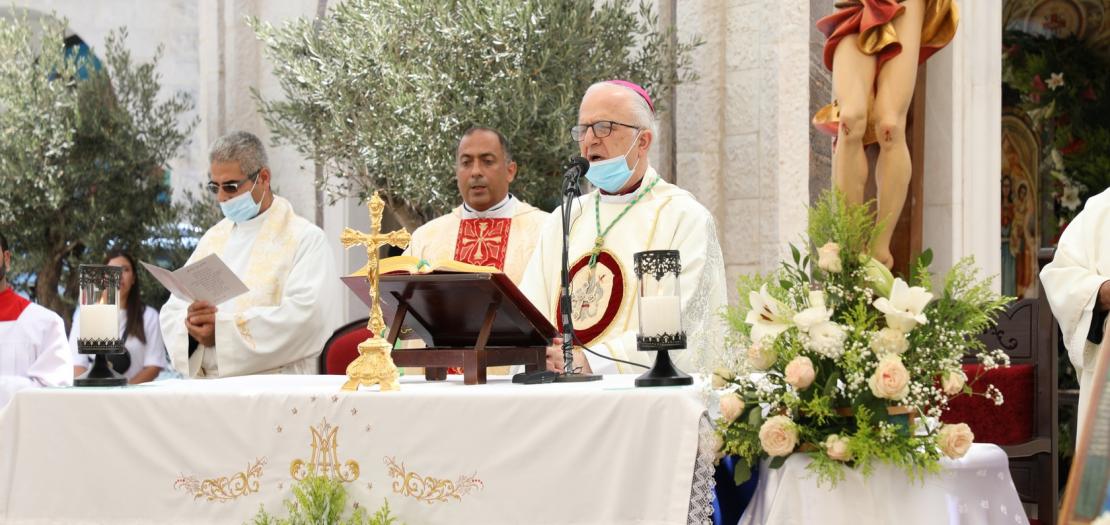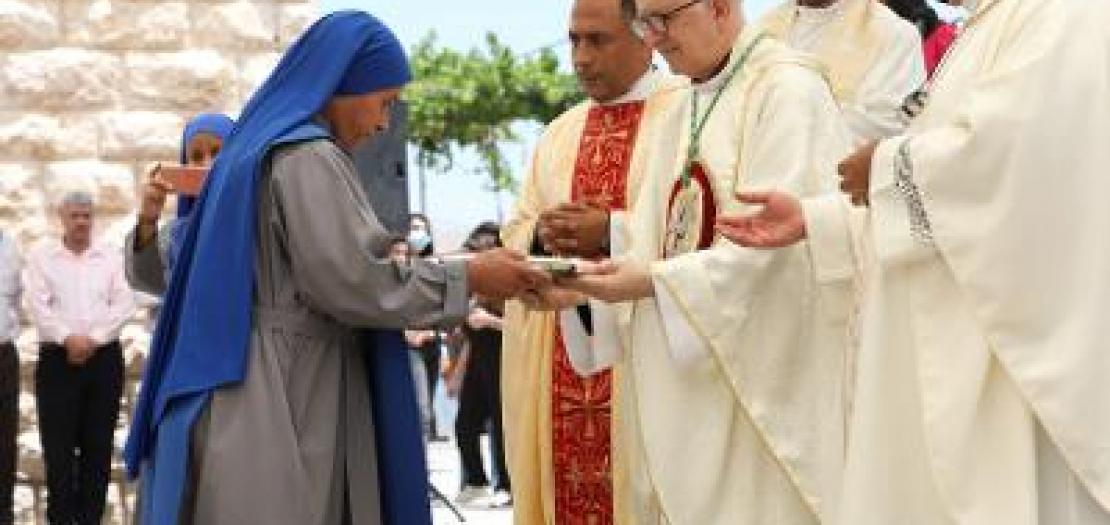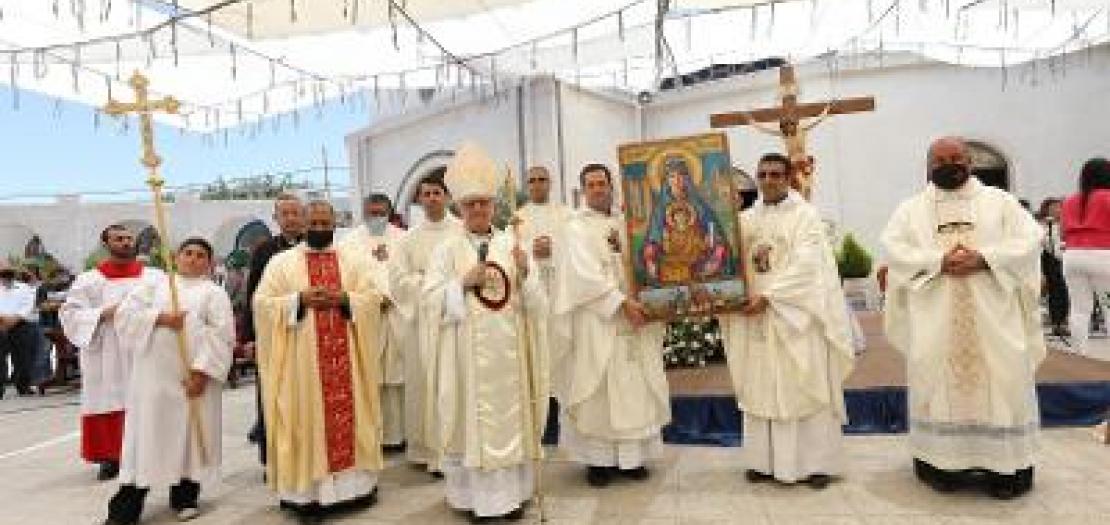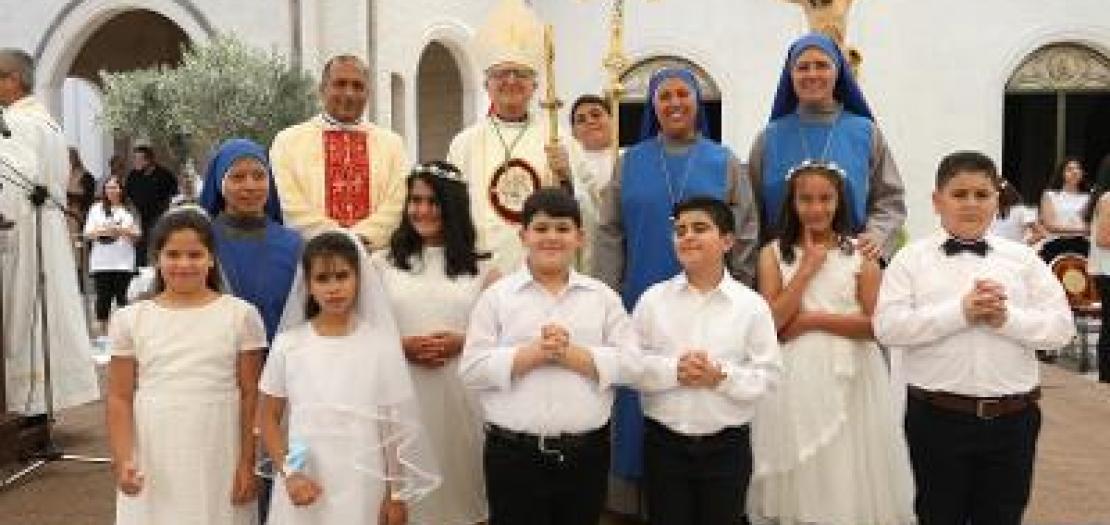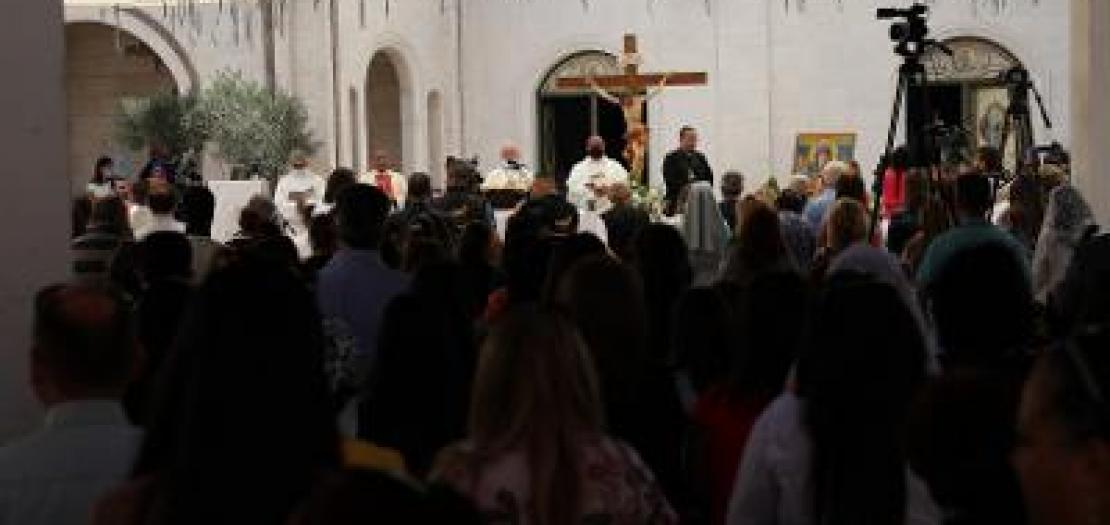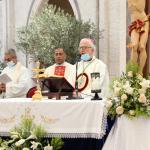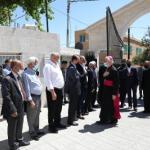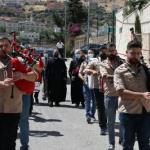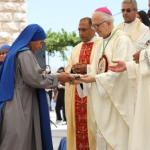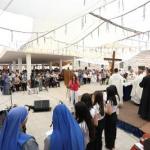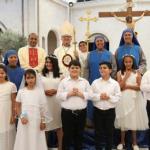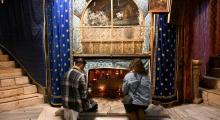Issued by the Catholic Center for Studies and Media - Jordan. Editor-in-chief Fr. Rif'at Bader - موقع أبونا abouna.org
On Friday, June 18, 2021, the Catholic Church in Jordan marked its annual celebration of the national and Christian pilgrimage day to Our Lady of the Mount shrine in Anjara in township, Ajloun Governorate, which has been one of the most prominent Christian pilgrimage sites in the Kingdom during the past two decades as it underlines deviation to Our Lady.
In this regard, a Holy Mass was celebrated by Latin Patriarchal Vicar for Jordan Bishop William Shomali marking the first Christian religious gathering that follows the easing of the restrictions imposed due to the Corona pandemic. The Holy Mass was attended by Archimandrite Nader Saouq who represented Roman Catholic Bishop Joseph Jbara, Church’s pastor priest Fr. Yousef Francis, nuns of the Incarnate Word, priests, and a large number of worshipers from all over the Kingdom.
In his homily, Bishop Shomali conveyed well wishes on pilgrimage to Our Lady of the Mount and touched on the most prominent spiritual meanings that Blessed Mary presents to the life of every Christian. He pointed out that honoring the Catholic Church of Blessed Mary stems from Her honoring of the gifts that the Almighty God granted Her, namely the immaculate conception, perpetual virginity, divine motherhood, and Her Assumption into Heaven.
Prayers were also said for Jordan's King and people, as well as for continued prosperity and for all families, especially for those who are going through difficulties. Prayers were also said for unity and peace in the world, especially in the Middle East region, so that fraternity and justice among nations could be attained.
During the Holy Mass, Bishop Shomali administered the first communion to a number of parish children.
The entire country of Jordan is filled with Biblical treasures, namely numerous historic sites that mark some of the most significant events in the salvation history, including Anjara.
Anjara is located in the hills of Gilead, east of the Jordan valley where several events mentioned in the Holy Bible took place. This pilgrimage was launched by Fr. Yousef Ne’mat, a priest of the Latin Patriarchate, who built the first sanctuary in memory of the passing of Lord Jesus Christ in this place. Fr. Ne’mat brought a statue of the Blessed Virgin Mary from Jerusalem and enthroned it in the shrine. The carved-wood statue is perhaps 150-200 years old and was made in Italy. As soon as the statue was placed, things started happening with what God is saying to us.
According to Christian sources, Blessed Virgin Mary and Lord Jesus Christ walked the mountain range, which runs along the Jordan, and took refuge for a time here in the present location of Anjara during their journey. The sources hold that Lord Jesus, Blessed Mary, and some of his disciples stayed overnight in a cave in the Ajloun mountains nearby during one of Jesus’ trips from Jerusalem to Galilee.
This pilgrimage gradually became one of the important feasts in the Jordanian Church.
It is worthy to mote that on May 6, 2010 the statue of Our Lady of the Mount shed tears of blood. This sanctuary has thus become part of a holy route in Jordan, visited by thousands of pilgrims every year.
It is related that one Incarnate Word nun and three ladies from the parish, along with some girls, were cleaning the sanctuary of the shrine. As the nun began wiping the locked glass door of the case that housed the statue of Mary — a door that was kept locked at all times — she saw the statue blink as if it were alive. Then the statue began to cry red tears. One of the school students also saw the statue blink and began to cry. Their shocked screams brought parish members rushing to the shrine; they also saw the tears.
Word of the miracle spread, and the local bishop issued a request to have the tears analyzed at a hospital in Irbid. It was confirmed that the tears were of human blood, according to a plaque that stands at the back of the shrine. Also according to the plaque, shortly after the tears were seen, the Latin Patriarchate of Jerusalem gave recognition to the event as a valid miracle. Remnants of the blood still can be seen on the statue’s face.


